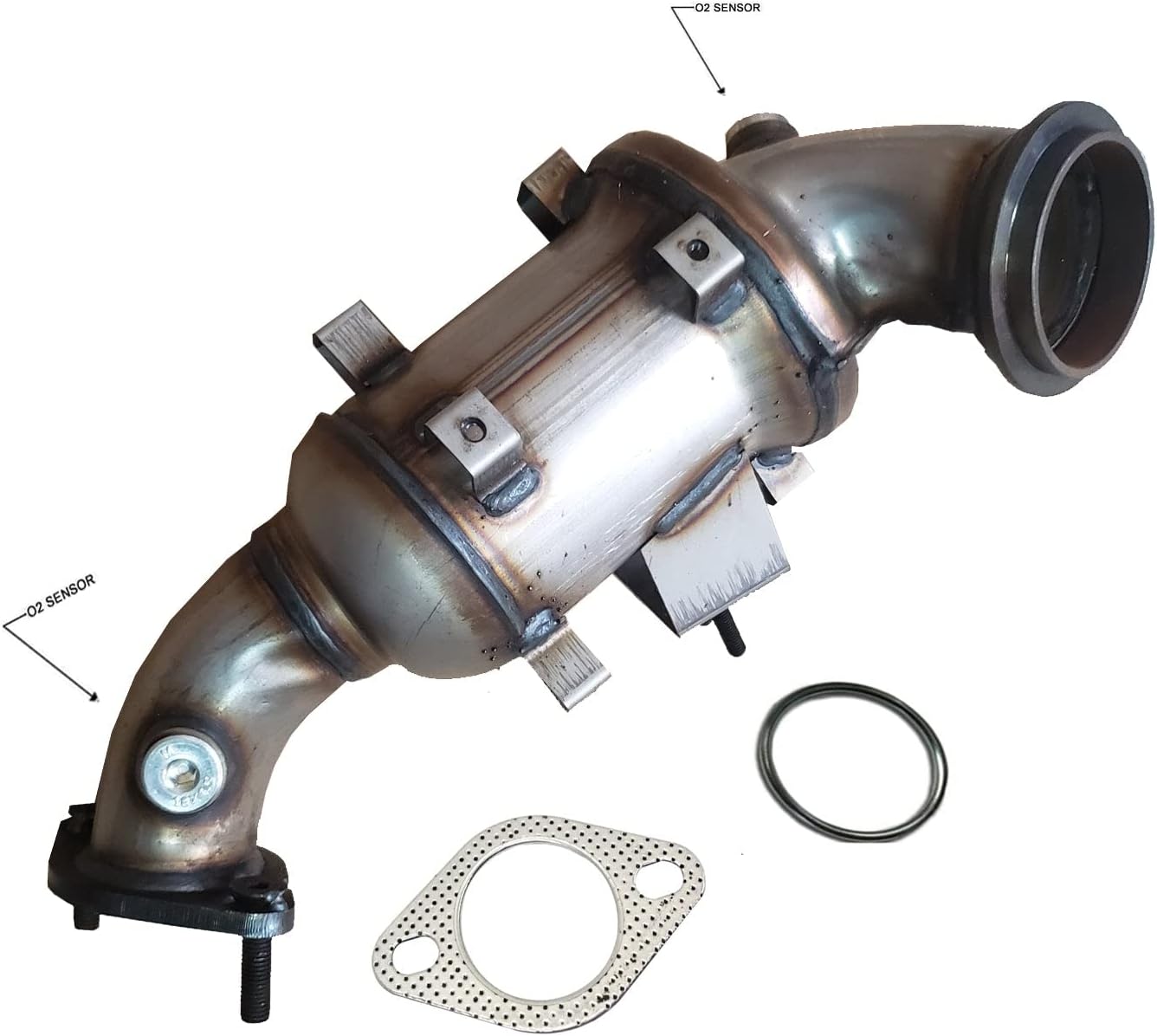Catalytic Converter For 2014 Ford Explorer

The 2014 Ford Explorer, a popular SUV, relies on its catalytic converter to meet stringent emission standards. This article delves into the technical specifications, engineering considerations, real-world performance, and future trends surrounding the catalytic converter specific to this model.
Technical Specifications and Engineering Choices
The catalytic converter in the 2014 Ford Explorer, depending on the engine (2.0L EcoBoost, 3.5L V6, or 3.5L EcoBoost V6), is typically a three-way catalyst. This means it's designed to simultaneously reduce three major pollutants: hydrocarbons (HC), carbon monoxide (CO), and nitrogen oxides (NOx). The precise composition of the catalytic materials – platinum (Pt), palladium (Pd), and rhodium (Rh) – varies based on Ford's specific engineering choices and supplier agreements. The ratio of these metals is crucial for optimizing the conversion efficiency across different operating temperatures and exhaust gas compositions.
The substrate, typically made of a ceramic material (often cordierite) formed into a honeycomb structure, provides a large surface area for the catalytic reactions. The cell density (cells per square inch or CPSI) affects the pressure drop and conversion efficiency. Higher CPSI generally leads to better conversion but also higher backpressure, potentially impacting engine performance. Ford engineers must carefully balance these factors. For the 2014 Explorer, the CPSI is likely in the range of 400-600, depending on the specific engine and emission regulations it's designed to meet.
The location of the catalytic converter is also important. Typically, it's placed close to the exhaust manifold to reach operating temperature quickly. This "close-coupled" design helps reduce emissions during cold starts, when the catalytic converter is less efficient. However, this proximity also exposes the converter to higher temperatures, potentially reducing its lifespan. Some models may also incorporate an underfloor converter further downstream.
Real-World Performance and Alternatives
A properly functioning catalytic converter on a 2014 Ford Explorer should effectively reduce HC, CO, and NOx emissions to meet EPA standards. However, real-world performance can be affected by several factors, including engine condition, fuel quality, and driving habits. For example, excessive oil consumption can "poison" the catalyst, reducing its efficiency. Similarly, using fuel with high sulfur content can degrade the catalyst over time.
Alternatives to the OEM catalytic converter include aftermarket options. These range from direct-fit replacements to universal converters that require welding. Direct-fit replacements are generally easier to install and are designed to meet OEM specifications. Universal converters are often less expensive but may require more modifications and may not provide the same level of performance as the OEM part.
Pros and cons of aftermarket converters:
- Pros: Lower cost, potentially improved flow (in some high-performance options).
- Cons: Potentially lower conversion efficiency, shorter lifespan, may not meet emission standards, potential for diagnostic trouble codes (DTCs), warranty issues.
Reliability Aspects and Maintenance Tips
The lifespan of a catalytic converter on a 2014 Ford Explorer can vary widely depending on driving conditions and maintenance. A well-maintained vehicle driven primarily on highways may see the converter last for 100,000 miles or more. However, vehicles subjected to frequent short trips, excessive idling, or neglected maintenance may experience converter failure much sooner.
Key maintenance tips to prolong the life of the catalytic converter:
- Regular engine tune-ups, including spark plug replacement and proper ignition timing.
- Promptly address any engine misfires or other performance issues.
- Use high-quality fuel with low sulfur content.
- Avoid excessive idling.
- Monitor engine oil consumption and address any leaks or excessive burning of oil.
A failing catalytic converter can manifest in several ways, including: reduced engine performance, poor fuel economy, a rotten egg smell (sulfur), and the illumination of the check engine light with codes such as P0420 (Catalyst System Efficiency Below Threshold). Diagnosing a catalytic converter issue often involves using a scan tool to monitor the upstream and downstream oxygen sensor readings. A healthy converter should show a stable downstream oxygen sensor reading compared to the fluctuating upstream reading.
Future Trends
Future catalytic converter technology is focused on improving efficiency, reducing precious metal usage, and enhancing durability. Some trends include: improved catalyst formulations with higher activity and selectivity, advanced substrate designs with lower pressure drop and higher surface area, and integrated exhaust aftertreatment systems that combine multiple emission control devices into a single unit. The increasing electrification of vehicles will also impact catalytic converter demand, although hybrid vehicles will still rely on them.
Another trend is the development of more sophisticated onboard diagnostic systems that can detect catalytic converter degradation earlier and more accurately. This will help vehicle owners identify and address potential issues before they lead to costly repairs or environmental damage.
Conclusion
The catalytic converter is a critical component of the 2014 Ford Explorer's emission control system. Understanding its technical specifications, performance characteristics, and maintenance requirements is essential for automotive professionals. As the automotive industry continues to evolve, with increasing focus on electrification and stricter emission standards, the role of catalytic converters may change, but they will remain an important part of the overall effort to reduce vehicle emissions and protect the environment. The future will likely see more advanced and efficient catalytic converter designs, along with more sophisticated diagnostic capabilities, ensuring that vehicles continue to meet increasingly stringent emission regulations. The development of synthetic fuels and their impact on catalyst longevity will also be a crucial area of future research.
